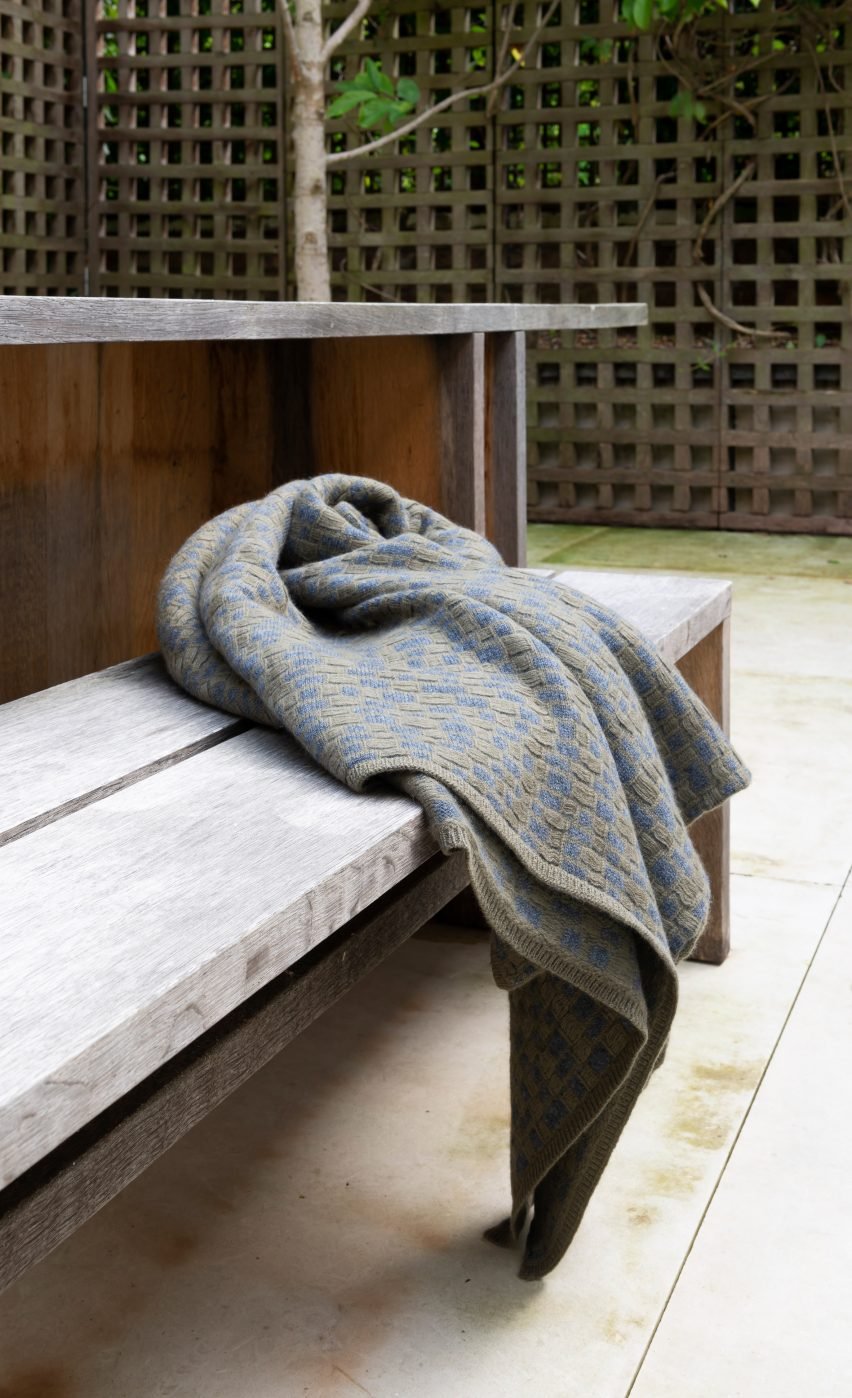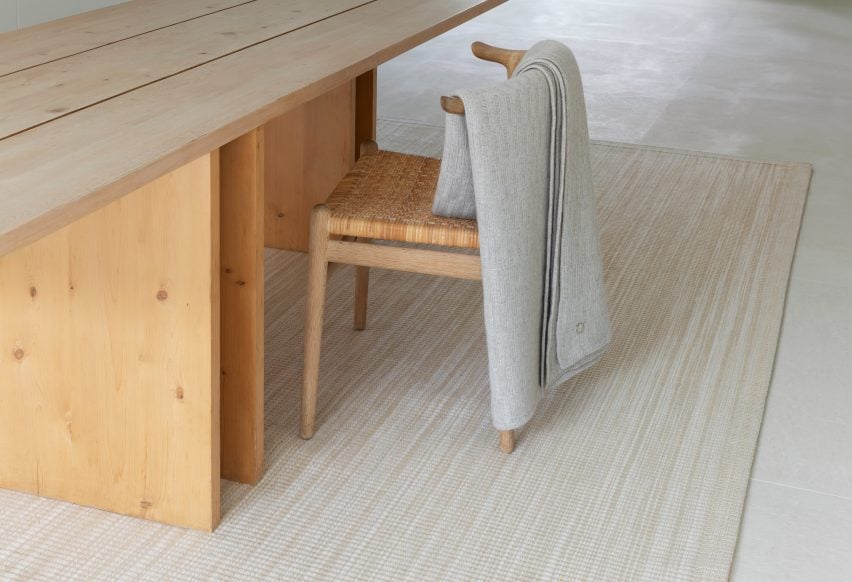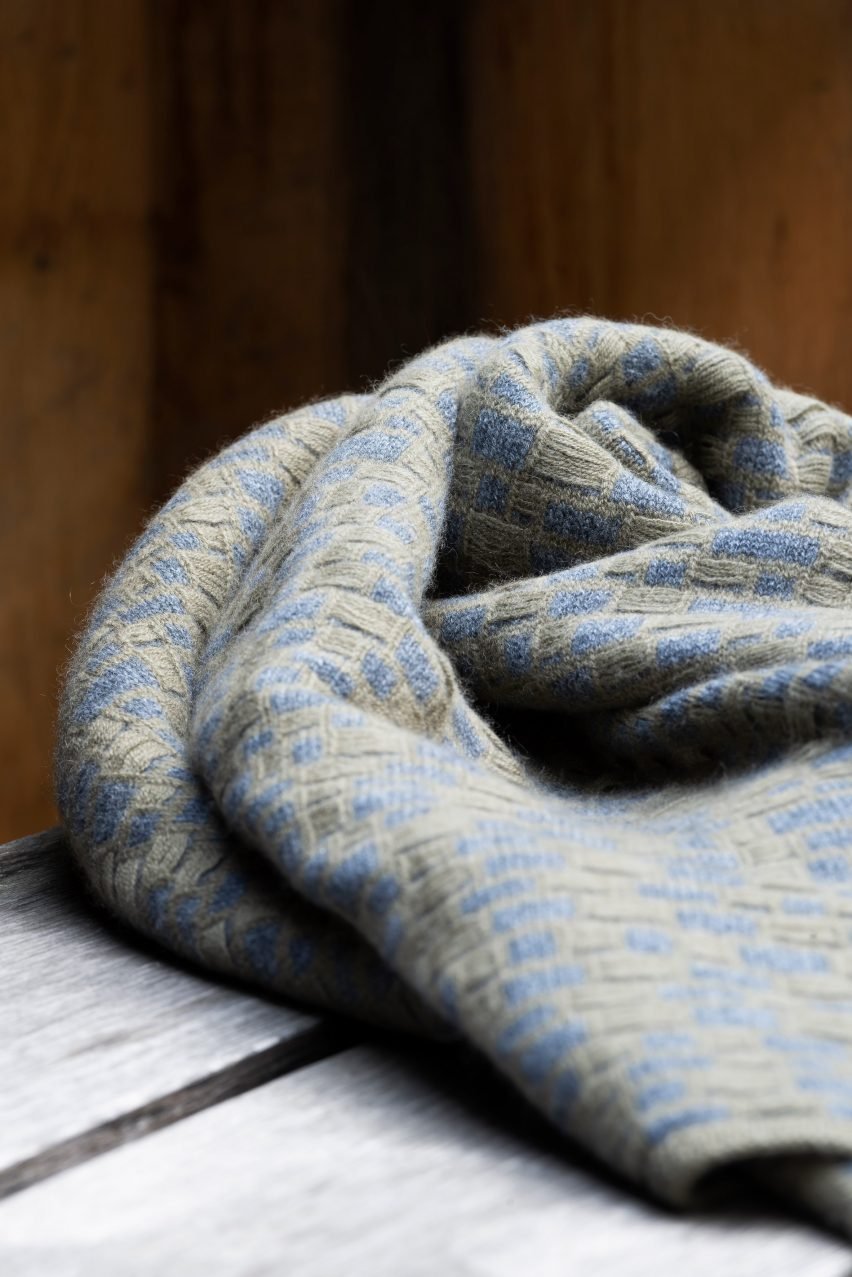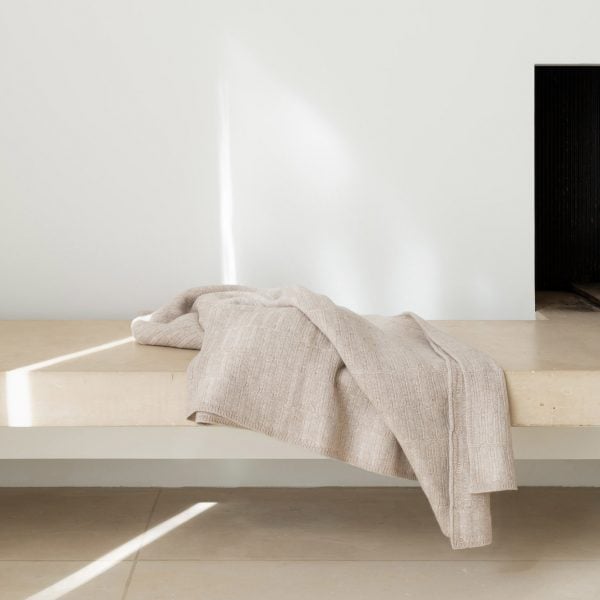British architect John Pawson has collaborated with cashmere brand Oyuna on a collection of throws that draw on his design for the Lake Crossing in London’s Kew Gardens.
The collection combines the Mongolian cashmere brand’s textiles with Pawson’s minimalist designs.
“So much of the thinking that has shaped my work also underpins Oyuna’s practice,” Pawson told Dezeen. “We wanted to create a series of designs based on embedded architectural narratives as a way of exploring these connecting threads.”
While Pawson is often associated with pared-back, almost stark interiors, he has previously also created textile designs for Danish brand Tekla.
According to the architect, what interests him in working with textiles is the fabrication process.
“I’m interested in the way that with textiles you start with an idea – it might be a specific visual reference or something more abstract to do with a pattern, a texture or a colour – and then you watch as the original image in your head is quietly transformed by the fabrication processes,” he said.

For Oyuna, Pawson designed a collection of throws with a muted colour palette. Both the hues and the patterns were partly inspired by Pawson’s design for the Kew Gardens Lake Crossing, which won the 2008 Stephen Lawrence Prize.
For example, the Stone throw features a pattern informed by Pawson’s slate stone wall design.
“The patterns are based on two architectural projects – a walkway across a lake and the fine ashlar courses of a wall of a house,” Pawson explained. “I like the fact that the finished pieces have an architecturally allusive aspect, but abstractly so.”

To founder Oyuna Tserendorj, Pawson’s pattern changes the fabric itself.
“It turns cashmere into soft architecture,” she told Dezeen.
Working with the architect was also a way of focusing on the architectural aspect of her Mongolian heritage.
“One might wonder what would unite architecture and the nomadic Mongolian culture where our cashmere comes from,” she said.
“But architecture is very much a part of the nomadic way…our yurts may not be permanent, but they express many key principles of architecture. And most importantly, our yurts carry fundamental principles of minimalism and John is today’s definition of minimalism.”

Before approaching the architect, she initially wondered what role textiles could play in his architecture.
“But I turned the question around and asked what role John’s architecture can play in the home of a nomad,” she said.
“So it’s almost like we don’t have to have a building to be encased by John Pawson. Our global nomads can live in a Pawson home wherever they are. As John always says, everything is architecture.”

Called Stone, Crossing and Lake, the throws come in different patterns and colours and were designed to fit “seamlessly” into other designs by Pawson.
“As a sensuous natural material, cashmere fits seamlessly into the material palette of Home Farm and our London house,” he explained.
“The right textiles serve both functional and aesthetic purposes, but they also contribute to the atmosphere of a space.”
In other Pawson news, the architect recently created a made-to-order wooden furniture collection for Danish brand Dinesen.
